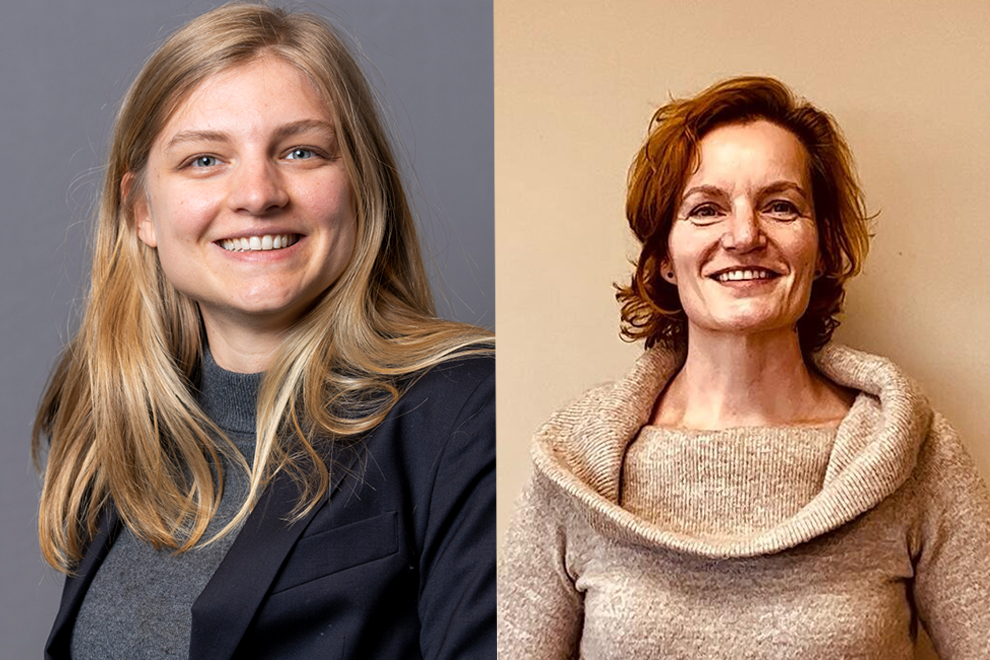"Coherence, coherence, coherence." That is the motto of VWS and MedMij for the implementation and scaling up of PBM in the coming years. After largely ending the VIPP programs, the ministry is taking the reins, and the healthcare field will soon notice that. For example, VWS is reducing the number of PBM suppliers from fourteen to three. Soon the tender for the period 2024 to 2026 will start.
By Leendert Douma
This was revealed by Amber Blikslager(left), policy officer for PGO at VWS, during the presentation "A well-rounded PGO in 2025: How then?" at Zorg & ict. She held that together with Margo Brands, team leader of Relationship Management and Projects at MedMij. A lot has already been achieved through the VIPP programs. But now it is time to move on, according to Blikslager and Brands.
Lifetime tool
A personal health environment (PBM) is an app or website in which people can maintain lifelong information about their own health. It allows them to collect, manage and share medical data. Anno 2024, this is pretty well established.
First, some milestones. By now, a million people have ever used the PBM to retrieve their data. There are now half a million users. Some 5,000 healthcare providers in all sectors are connected. Most hospitals and almost all general practitioners (97 percent) are connected.
Birth Care
There are now fourteen PBM vendors with a MedMij label. But there is still a world to be won. A diagram by Brands shows that by far the most data flows are in general practitioner care and medical specialist care. But concrete work is now being done in regional test and pilot phases to connect long-term care facilities and pharmacies, especially medication reviews. And birth care.
"The PBM should become a lifelong tool, so it's nice if this starts at birth," Brands said. In addition, the government is testing for sharing RIVM information such as covid vaccinations and the National Vaccination Program in the PGO.
Brands: "The fact that the info in all sectors is in different source systems makes it very complex. We have invented zibs for that: healthcare information building blocks. But these are filled in differently for each sector." So there is still a lot of work to do to implement forms of standardization.
MedElkaar and MGO
The IZA sets the ambition that by next year, all Dutch people who want it "will have access to a user-friendly and well-stocked PBM.
To realize this, VWS has set up the MedElkaar trajectory and My Health Overview (MGO) with Zorgverzekeraars Nederland and the Patient Federation. A number of concrete actions are rolling out from this. For example, the user-friendliness is not that great right now because people have to log in manually everywhere separately, Blikslager reveals. "We are working on a public facility that ensures that citizens can log in securely everywhere at once with their DigiD."
As for filling, administrative talks are being held to reach agreements and working agendas to connect the sectors mentioned, Blikslager said. VWS is setting up a program office and in the meantime Martina Bartelink has started as program manager. And there is money for the umbrellas to deploy additional FTEs.
Government and legislation
Another tool used by the ministry is legislation. The Electronic Data Interchange in Health Care Act (Wegiz) makes it possible to mandate data access from the health care provider to the PBM. As of July 1, 2024, there is an obligation for general practitioners to unlock the medication appointment to the PBM. Other obligations in this area will be submitted to the House of Representatives.
"Who has ears for that," Blikslager said. In addition, the government itself is also picking up the gauntlet. A start will soon be made on opening up public health data collected and provided by the government. In the second quarter, it will be the turn of RIVM's data on covid vaccinations and HPV vaccinations among 16- and 17-year-olds, and in the last quarter of 2024 the data from the National Vaccination Program will be available via PBM.












